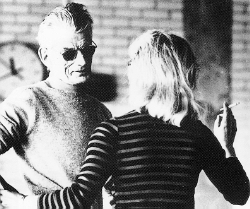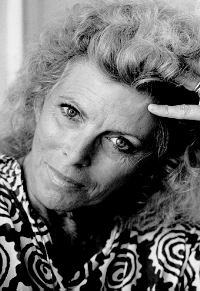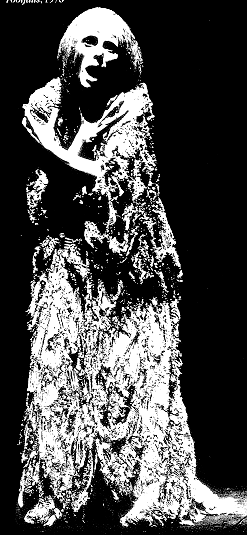


Billie Whitelaw, preeminent actress of playwright Samuel Beckett, presents a reading of his poetry and prose and reminiscences of her work with the playwright. More than any other actor or actress, Whitelaw came to be regarded as Beckett's muse. Her recent autobiography, Billie Whitelaw...Who He?, recounts her 25 years of intimate collaboration with Beckett on such plays as Not I, Eh Joe, Krapp's Last Tape, Play, Footfalls, and Rockaby.

"It's possible that you haven't really lived until you've watched Billie Whitelaw die.... Mr. Beckett and Miss Whitelaw make time stop, and its a sensation that no theatergoer will soon forget." - FRANK RICH, in a review of Rockaby for The New York Times

BILLIE WHITELAW has been one of Laurence Olivier's leading ladies; she has worked with Alfred Hitchcock, Orson Welles, Albert Finney, Peter Sellers, and other greats; she has appeared in films that include The Sleeping Tiger, Miracle in Soho, Make Mine Mink, The Krays, and The Omen (in which she played the notoriously evil nanny); most of all, she was the longtime muse of the great playwright Samuel Beckett, with whom she worked closely for twenty-five years.
In this likable, clear-eyed memoir Whitelaw traces the arc of her extraordinary career-a career that transported her from an underprivileged childhood in Coventry to the brightest lights of stage and screen, though she never even dreamed of becoming an actress. With candor, humor, and generous detail, she reveals what it was like to work with the most accomplished and up-and-coming directors, playwrights, and fellow actors of her time. She gives us an intimate view of the day-to-day workings of the mind of Beckett as he devised his unique, intense theatrical style in plays like Footfalls, Play, and Happy Days.
A must-read for theater and film aficionados, Whitelaw's story is one of an irrepressible talent who has forged a stellar career.
Billie Whitelaw performed at the New York State Museum on January 24, 1996.
Writers Online Magazine Article
[an error occurred while processing this directive]